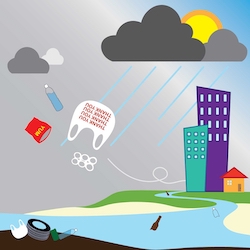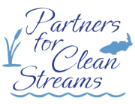
Plastic touches many parts of our lives. Grocery shopping, doing laundry, and our trusted personnel protective equipment. It can be hard to make changes to our daily activities – especially since plastics can be in everyday products. There are two types of impacts plastics can have on our waters.
The first being a direct impact. This is an impact that can be traced back to plastic with little science involved. Studies have shown that pieces of plastic can be found in fish, birds, and other marine wildlife. This can have severe harm to the animal’s digestive tract and even cause death. Indirect impacts are secretive and take a little bit more time to deduce the cause. Plastic pollutants such as PCBs (polychlorinated biphenyls) or microplastics in micro-scrubbers cause unknown damages to our waterway’s quality and wildlife.
While the unknown seems, scary there are small steps we can take to reduce the plastic we use. Reducing, reusing, and recycling are all effective efforts to reduce marine debris. Check out these great resources from NOAA to reduce your marine debris impacts.
While the unknown seems, scary there are small steps we can take to reduce the plastic we use. Reducing, reusing, and recycling are all effective efforts to reduce marine debris. Check out these great resources from NOAA to reduce your marine debris impacts.
As always, conducting a CYS 365 is another great way to reduce direct plastic impacts. Check out how to do one safely here: CYS 365
